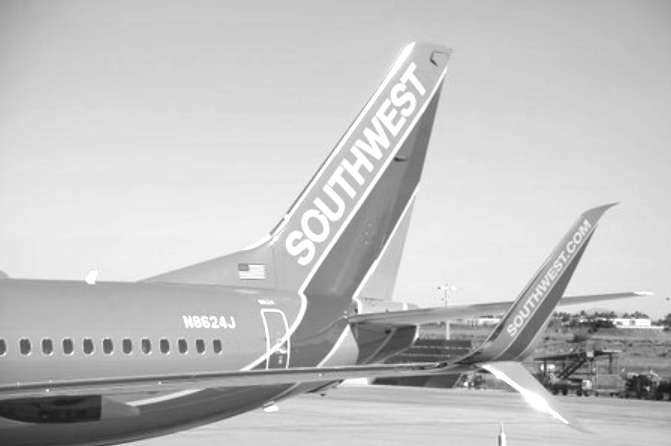Adding to the already-high levels of stress associated with air travel, systemwide computer outages have become an increasingly common occurrence, raising the prospect of not only a cramped, uncomfortable flight, but a cramped, uncomfortable flight that is delayed or cancelled.
On July 20, a computer meltdown at Southwest resulted in more than 2,000 delayed or cancelled flights, inconveniencing tens of thousands of travelers. According to one analysis, the disruption cost Southwest at least $54 million in lost revenue and increased costs.
Then, in early August, Delta’s computers crashed, resulting in thousands more flight delays and cancellations over several days.
Today, in an 8-K filing, Delta hinted at the price tag for that debacle. “(T)he outage Delta suffered in August resulted in 2,300 cancelled flights over a three day period. The outage and subsequent operational recovery efforts negatively impacted August revenue by approximately $100 million or 2 points of PRASM (passenger revenue per available seat mile).”
That $100 million figure likely understates the actual financial impact, as it’s limited to the estimated decrease in top-line revenue. If the costs of accommodating affected flyers, staff overtime, and so on were factored in, the total hit to Delta’s bottom line would likely double. (In Southwest’s case, the breakdown between lost revenue and increased costs was approximately equal.)
As heady as those disruption costs may seem, in the context of the two airlines’ annual revenues, they’re inconsequential. Which means they can be readily dismissed as a cost of doing business. Which means that there’s little incentive for the airlines to fix the infrastructure weaknesses that are the root cause of the problems.
That is undoubtedly the thinking behind a letter sent to the country’s 13 largest airlines by Senators Edward Markey (D-Mass.) and Richard Blumenthal (D-Conn.), reminding them of their “responsibility to ensure that your IT systems are both reliable and resilient.”
In addition to criticizing the airlines for their refusal to invest in the systems critical for operating safe, reliable air transport, the senators called into question the adequacy of the carriers’ policies and procedures for handling consumers affected by service disruptions.
What Will It Take?
While no one element may be sufficient in itself, the combination of lost profits, consumer disapproval, and government pressure would seem to be enough to nudge the airlines into upgrading their systems. But there is a strong countervailing force: pressure from Wall Street on the airlines to improve their financial performance.
So, rather than spend their hefty profits on bolstering service, airlines have been buying back their own shares, an easy way to boost earnings-per-share, a favorite analyst metric. It’s not that the airlines can’t afford to make the required improvements. Rather, they’ve chosen to spend the money elsewhere.
And there you have it: a classic standoff, between the interests of consumers and the interests of shareholders (including most companies’ top managers). Until the balance of power shifts in their favor, flyers will have to hope their cramped, uncomfortable flights at least operate more or less on time.
Reader Reality Check
How confident are you that your flight will depart and arrive as scheduled?
After 20 years working in the travel industry, and almost that long writing about it, Tim Winship knows a thing or two about travel. Follow him on Twitter @twinship.
This article first appeared on SmarterTravel.com, where Tim is Editor-at-Large.


Leave a Reply